Sunday Post: Exploring Rousham Hall in Oxfordshire
Editor's Note
The plan for the Friends of the Anglotopia Club was that in addition to the weekly Sunday Post articles, we would also publish one feature article/long read a month. We've been working away to make that happen, and it's taken a little longer than planned. We planned to publish these special articles on the 15 of the month.
Since this article is already very long, when the 15th coincides with a Sunday, we'll only be sending the feature instead of the usual Sunday Post. So, today, you get this lovely long article on a special place in Oxfordshire I visited. I hope you like it! Please let us know if you like how we have formatted and presented it. Thanks for reading!
Since this article is already very long, when the 15th coincides with a Sunday, we'll only be sending the feature instead of the usual Sunday Post. So, today, you get this lovely long article on a special place in Oxfordshire I visited. I hope you like it! Please let us know if you like how we have formatted and presented it. Thanks for reading!
Member Update
We're now 107 members strong! Welcome to the new members!
Here are some highlights from the private chat forum this week:
- Anglotopia Appears on BBC Radio 5 Live!
- Autumn in Britain
- ‘I traded California for a life in Stoke-on-Trent’
- The 880-year-old B&B in Oxfordshire embracing Gen Z marketing
- All Creatures Great and Small, Season 5 Preview & Release Date
Monthly Feature: Rousham House and Gardens - A Hidden Gem of English Heritage

Note: This is really long; you may have a more enjoyable reading experience by opening this on a computer rather than reading in the email version.
One of my favorite aspects of exploring Britain is that no matter how much I think I know about know about the special places that make it great, there is always somewhere I have never heard of. When I did an Oxford Summer Course in 2022, one of the day trips listed was to a place called Rousham House and Gardens. I was immediately excited because it was a place I’d never heard of and knew absolutely nothing about.
One of my favorite aspects of exploring Britain is that no matter how much I think I know about know about the special places that make it great, there is always somewhere I have never heard of. When I did an Oxford Summer Course in 2022, one of the day trips listed was to a place called Rousham House and Gardens. I was immediately excited because it was a place I’d never heard of and knew absolutely nothing about.
It was not far from Oxford, about forty minutes by coach. The tour was arranged by the Oxford Experience, and the group on tour was a mixture of students from other courses (this excursion was optional, and you didn’t have to take part if you didn’t want to. On the journey to the house, our tour guide gave us an overview of the place and why it was so famous. This was a great introduction because it prepared us for what was to come.
What follows is what I learned on that visit and what I’ve learned since about this special place.
Introducing Rousham House
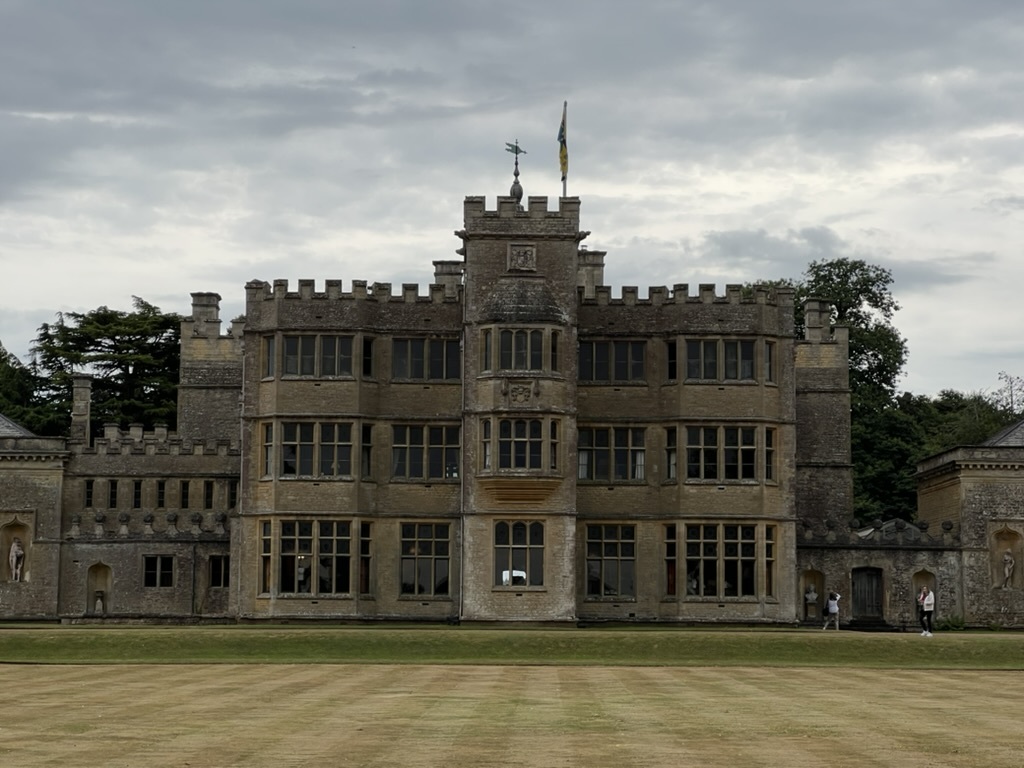
Nestled in the Oxfordshire countryside, Rousham House stands as a testament to centuries of English architectural and landscape design. Also known as Rousham Park, this country house has been a silent witness to the ebb and flow of English history since its construction circa 1635. What sets Rousham apart from many of its contemporaries is its remarkable continuity: for nearly four centuries, it has remained in the ownership of a single family, the Cottrell-Dormers. This place is not a famous National Trust or English Heritage property; it is a private home, nestled deep in the countryside, far away from the nearest towns or villages.
While the house is most impressive, Rousham's true claim to fame, however, lies in its gardens. Described by English horticulturist Monty Don as his favorite garden in England, Rousham's landscape is a masterpiece of 18th-century garden design. It offers visitors a rare glimpse into the original vision of William Kent, one of the pioneers of the English landscape garden movement. Horticulturally minded visitors will travel from all over the world to explore these gardens (and not even look at the house! which would be a shame!).
Unlike many stately homes that have been transformed into major tourist attractions, Rousham maintains an air of privacy and authenticity. The house is open by appointment only, while the gardens welcome visitors daily, offering a serene escape from the beaten path of more commercialized historic sites. You will find no cafe, or gift shop. The only thing close is an honesty box for admissions and to pay for a brochure if you decide to take one. When you turn up to the stable block, it’s like you’re arriving at someone’s home, not one of the most famous gardens in the world.
Historical Background
The story of Rousham begins in the 1630s when Sir Robert Dormer purchased the manor. He immediately set about constructing the present house, completing it around 1635. However, the Dormers' plans were soon interrupted by the outbreak of the English Civil War. As staunch Royalists, they saw their newly built home come under attack from Parliamentary soldiers.
A fascinating detail from this period survives: one of the oak doors from the original Jacobean house still bears musket holes, reportedly used by Sir Robert Dormer to defend against advancing Parliamentarians. This tangible connection to the Civil War era adds a dramatic touch to the house's long history. It always amazes me how history in England is everywhere, even in the mundane. The door is older than most settlements in North America!
In 1649, the estate passed to Sir Robert's son, also named Robert. While he focused primarily on repairing the damage inflicted during the Civil War, he made significant strides in restoring the family's fortunes through two advantageous marriages to heiresses. His second wife was the daughter of Sir Charles Cottrell, a high-ranking courtier of King Charles II, forging a connection that would later prove significant in the estate's history.
The true transformation of Rousham, however, began in 1719 when Colonel Robert Dormer-Cottrell inherited the estate. It was under his stewardship that the gardens began to take their current form, marking the beginning of Rousham's significance in the history of English landscape design.
The Kent Renovation
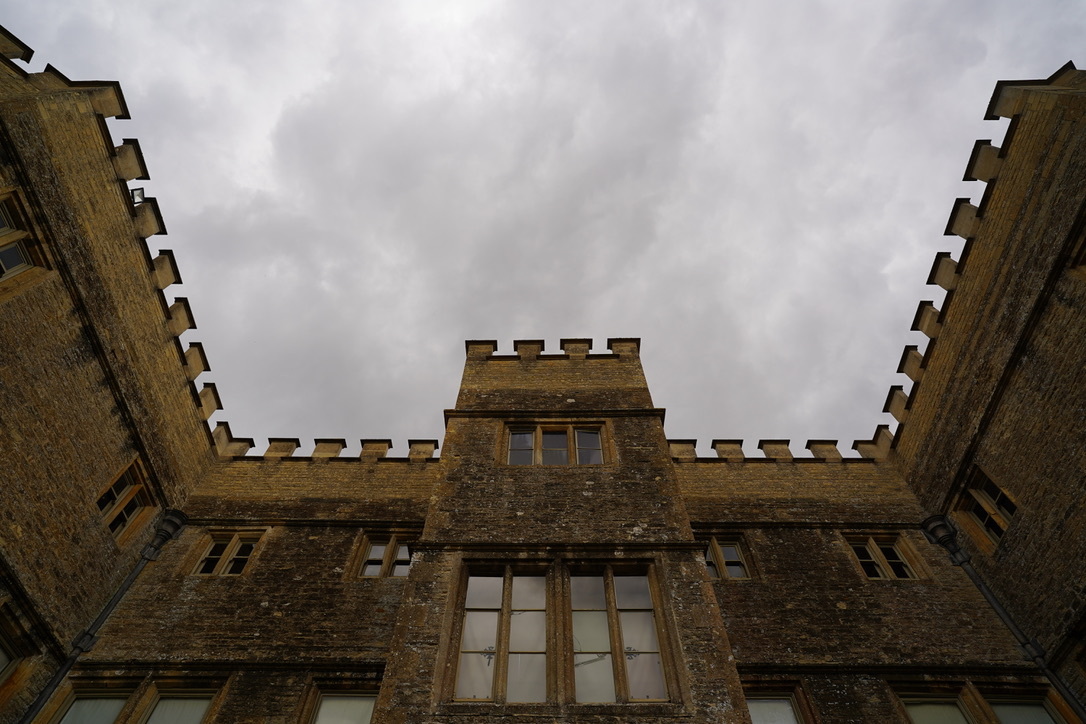
The 1730s saw a major turning point in Rousham's history with the involvement of William Kent, one of the most influential landscape designers of the 18th century. Kent was called in by General James Dormer, who had inherited the estate from his brother, Colonel Robert Dormer-Cottrell.
William Kent was an influential English architect, landscape architect, and furniture designer who lived during the 18th century. Born around 1685 in Bridlington, Yorkshire, Kent started his career as an apprentice to a coach painter in Hull. He later moved to London, where he studied painting and decorating. Kent's talent was quickly recognized, and he gained patronage from prominent figures in the arts and aristocracy. He became known for his work in the Palladian style, a neoclassical architectural style inspired by the designs of the Venetian architect Andrea Palladio.
Kent's influence extended beyond architecture and design, as he played a pivotal role in shaping the English landscape garden movement. His approach to landscape design was characterized by a departure from the formal, geometric style of earlier garden designs, instead embracing a more naturalistic and picturesque aesthetic. Kent sought to create landscapes that harmonized with the surrounding environment, employing elements such as rolling lawns, strategically placed trees, and serpentine paths to evoke a sense of effortless beauty and tranquility.
One of Kent's major achievements was his collaboration with Lord Burlington at Chiswick House, where he contributed to the design of the gardens and interiors. His work at Rousham House further solidified his reputation as a pioneer of English landscape design. Kent's philosophy emphasized the integration of architecture and nature, striving to create landscapes that appeared timeless and uncontrived, in contrast to the formal, rigid designs of the earlier Baroque era. His lasting legacy lies in his transformative impact on the principles of garden design, which continue to influence landscape architects and enthusiasts to this day.
Kent's work at Rousham was twofold, encompassing both the house and its surrounding landscape:
- The House: Kent transformed the existing structure into an Early Tudor palace. He added a straight battlement parapet and a central ogee cupola, giving the house a more imposing silhouette. The windows were initially glazed with octagonal panes, a feature that was later altered. Kent also added low wings to the main structure, joined by corridors with crested parapets. These wings featured Gothic ogee niches on the garden side, housing lead statues of classical subjects by Henry Cheere.
- The Gardens: Kent's work in the gardens built upon the initial designs of Charles Bridgeman, who had been employed earlier to lay out the grounds in a more naturalistic style. Kent aimed to create an idealized version of the Roman countryside, complete with classical temples, follies, and statuary.
Kent's renovations at Rousham were so successful that they helped cement his reputation. The famous 18th-century art historian Horace Walpole, upon visiting Rousham in 1760, remarked that it "reinstated Kent with me; he has nowhere shewn so much taste.”
Exterior Architecture
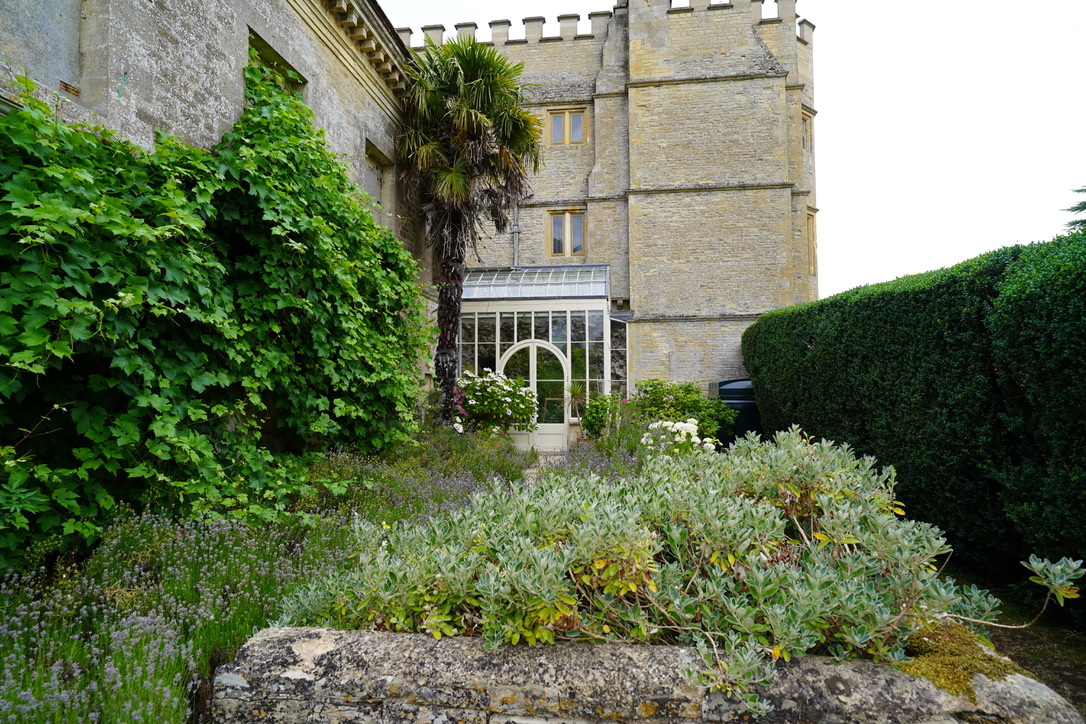
The exterior of Rousham House shows the evolving tastes and styles of English architecture over the centuries. The south front of the house, in particular, remains almost exactly as William Kent left it in the 1730s, offering visitors a rare glimpse into 18th-century architectural aesthetics.
In 1876, during a restoration led by architect James Piers St Aubyn, the original octagonal paned glazing was replaced with innovative large sheets of plate glass. While this alteration was in keeping with the technological advancements of the Victorian era, some argue that it had a somewhat deadening effect on the overall appearance of the house.
From certain windows, visitors can get an excellent view of Kent's stable block. Interestingly, Kent later used this design as the basis for Horse Guards in London, which he designed in 1748, the year of his death. This connection between Rousham and a well-known London landmark highlights the broader influence of Kent's work at Rousham.
Interior House Features

Tours are offered at Rousham House, but they must be pre-booked, usually with a group. You can’t just turn up and pay admission; it is well a private home (in fact, while we were there, we saw the owner pull up in a very nice Land Rover and put the heir to the family seat into a pram and wheel him off). If you’re able to arrange a tour of the house, I highly recommend doing it. It’s a real treat. Photography was not allowed, but the interiors are splendid (unfortunately, I was not allowed to take pictures and I cannot find pictures of the interiors).
The tour of Rousham House reveals a diverse interior, with rooms reflecting different periods and styles:
- The Entrance Hall: This space retains a strong connection to the house's 17th-century origins, including the aforementioned oak door with musket holes. The hall houses an impressive collection of family portraits, including one of the Duchess of Feria, née Jane Dormer, a friend of Queen Mary Tudor.
- The Painted Parlour: Originally the 17th-century kitchen, this room was transformed by William Kent into what is now considered one of the most exquisite small rooms of 18th-century England. Kent's decoration here is a masterclass in adapting grand design principles to a more intimate scale, working within the constraints of the room's Jacobean proportions and low ceiling.
- The Dining Room: This room houses some of the most important artworks in the house, including an allegory of the French religious wars titled "The Four Kings of France" by William Dobson. The room also displays a series of family portraits, including one of Sir Charles Cottrell by Kneller.
- The Small Drawing Room: This room showcases the family's appreciation for fine decorative arts. It contains an impressive collection of porcelain, including Nymphenburg groups in white porcelain, as well as miniatures by the renowned 17th-century artist Samuel Cooper. The room also features a view of Rousham by Thomas Jones, a follower of the landscape painter Richard Wilson.
- The Oak Bedroom: This room is unique in that it's the only one William Kent didn't touch during his renovations. It features original Jacobean paneling and a bed older than the house itself, brought from John Dormer's house at Dorton in Buckinghamshire. The bed has interesting "scorch marks" under its arches, reportedly made by candles placed at the head of the bed when someone was "getting on to higher and better things."
The house is not a huge, grand house by any means. It’s an intimate place (made a bit more intimate by 40 Anglophiles traipsing through it). As it is a private home, the house feels very much lived ii. Walking through these rooms still being used by the family today, almost feels like trespassing. The rooms are well-appointed and cluttered with centuries of aristocratic objects. Only the occasional TV or picture gives away that this is a family home. The house shows its age, in a remarkably shabby way (I mean this positively). The house hasn’t been conserved or restored in the way that many other great houses in England have been. There’s darkened varnish on the family paintings, centuries of dirt and dust on the walls, and significant cracks in the plasterwork.
It is truly marvelous to behold.
The Gardens: Kent's Masterpiece

While the house itself is undoubtedly impressive, the gardens of Rousham truly set it apart. After our tour of the house, we were let loose to spend a few hours exploring the gardens. William Kent's work here is considered one of the earliest and most important examples of the English landscape garden style, a naturalistic approach to garden design that would come to define the English countryside.
Kent's design was built upon the earlier work of Charles Bridgeman, who had already begun to move away from the formal, geometric gardens popular in the earlier part of the 18th century. Kent took Bridgeman's initial layout and transformed it into a series of picturesque scenes, each carefully composed to evoke the spirit of classical antiquity.
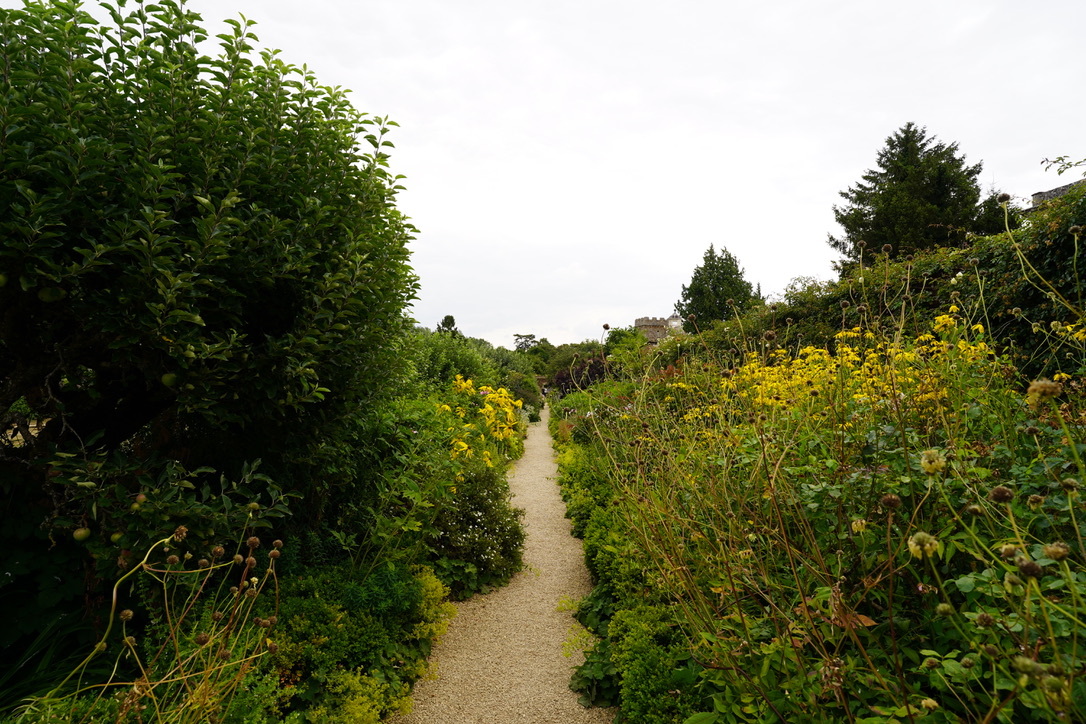
Key features of the garden include:
- The River Cherwell: The gardens are laid out to take full advantage of their position overlooking a curve in the River Cherwell (which flows to Oxford and then onto the Thames). This natural feature provides a constantly changing backdrop to the designed landscape.
- Classical Structures: Throughout the garden, Kent placed a series of classical temples, follies, and statuary. These structures, inspired by the architecture of ancient Rome, serve as focal points and add a sense of discovery as visitors move through the landscape.
- Water Features: Kent made extensive use of the abundant water from the Cherwell, creating a series of small rills, larger ponds, and formal pools. These water features not only add visual interest but also provide a soothing soundscape throughout the garden.
- The Praeneste: This large, Roman-style colonnade is based on the Temple of Fortuna Primigenia in Palestrina, Italy. It serves as a grand viewing platform, offering sweeping views across the Cherwell valley.
- Statuary: Throughout the garden, visitors encounter statues by Peter Scheemakers depicting Roman gods, mythological creatures, and scenes such as a dying gladiator or a horse being savaged by a lion. These sculptures add drama and reinforce the garden's classical theme.
- The Ha-Ha: This sunken fence, designed by Charles Bridgeman, creates a barrier to livestock without interrupting the view, an innovative feature for its time.
- The Walled Gardens: The southern side of the estate boasts a striking contrast to the eighteenth-century ‘Pleasure Grounds’ designed by William Kent. Here, you’ll find three charming walled gardens dating back to the seventeenth century. Lush herbaceous borders line the winding paths, while peaches, apricots, plums, and pear trees elegantly adorn the ancient brick walls. A tranquil pool with a mesmerizing fountain sits amidst fragrant roses, and a pathway flanked by espalier apples leads to an archway welcoming you to a bountiful kitchen garden. Beyond, a whimsical arched gap in a box hedge reveals a smaller garden featuring a charming circular dovecote and a majestic Mulberry tree overlooking a delightful box parterre teeming with vibrant roses.
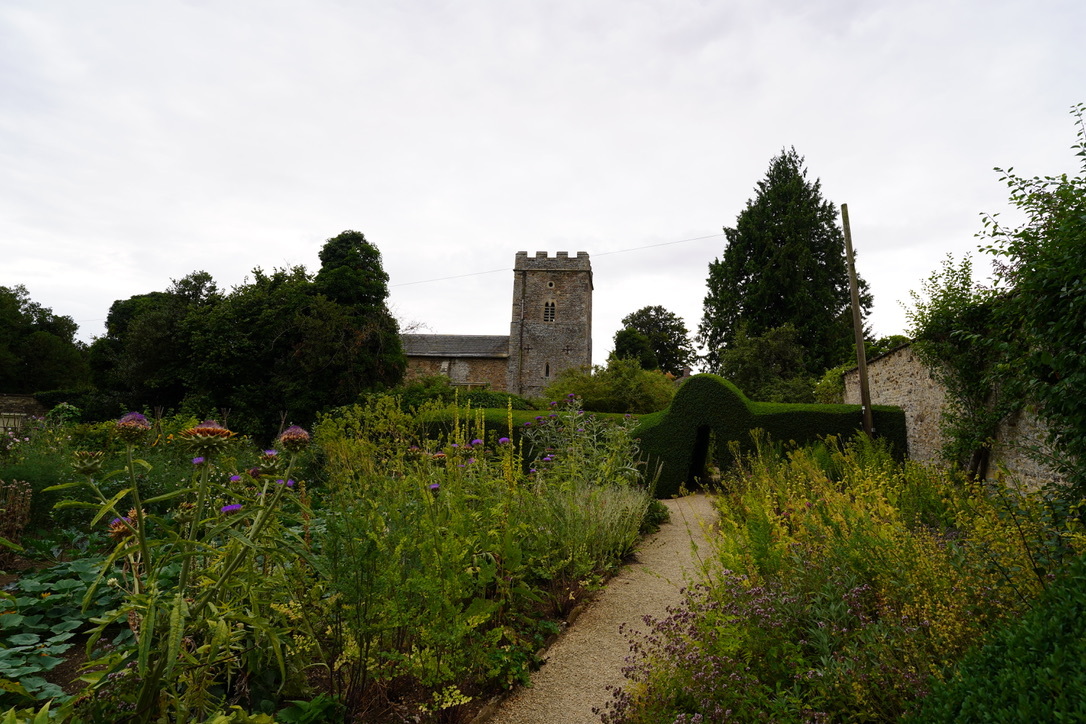
What makes Rousham's gardens truly special is their remarkable state of preservation. They are considered the only unaltered Kent-designed gardens left in England, offering visitors a rare opportunity to experience an 18th-century landscape garden as it was originally conceived.
I’m not a garden kind of person; I don’t have a green thumb. But I loved the gardens here, they were truly spectacular to behold. I often joke that the British are better at everything, that’s why I find them so fascinating, but they are truly talented at gardening and turning their gentle landscape into something beautiful.
I got lost in these gardens, and this being 2022 and my first trip anywhere after the COVID lockdown, it was a true sublime pleasure to be able to walk around the gardens and brief in the fragrant flowers and fresh English air. I didn’t want to leave. Kent succeeded - he had definitely created the ideal landscape to enjoy. I only hope that some of the pictures I’ve shared have done it justice!
Cultural Significance

Rousham House and Gardens hold a unique place in English cultural heritage, influencing areas beyond just architecture and landscape design:
- Architectural Influence: Rousham stands as one of the finest examples of early 18th-century architecture in England. Its transformation by William Kent represents a pivotal moment in the evolution of English country house design, bridging the gap between the Jacobean and Georgian styles.
- Landscape Gardening: The gardens at Rousham are considered a seminal work in the development of the English landscape garden style. This naturalistic approach to garden design, pioneered by Kent at Rousham, went on to influence landscape architecture throughout Europe and North America.
- Literary Connections: The beauty and atmosphere of Rousham have inspired writers and poets over the centuries. Horace Walpole was particularly effusive in his praise, describing the garden as "Daphne in little" and noting its "perfectly classic" scenes.
- Film and Television: In recent years, Rousham's timeless beauty has made it a popular location for period dramas and films, including ITV's "Lewis" and the BBC's 2021 miniseries "The Pursuit of Love” (I thought it looked familiar!)
- Horticultural Importance: The gardens at Rousham continue to be celebrated by modern horticulturists. Notably, Monty Don has declared Rousham his favorite garden in England, highlighting its enduring appeal and relevance in the world of garden design.
Visiting Rousham House and Gardens
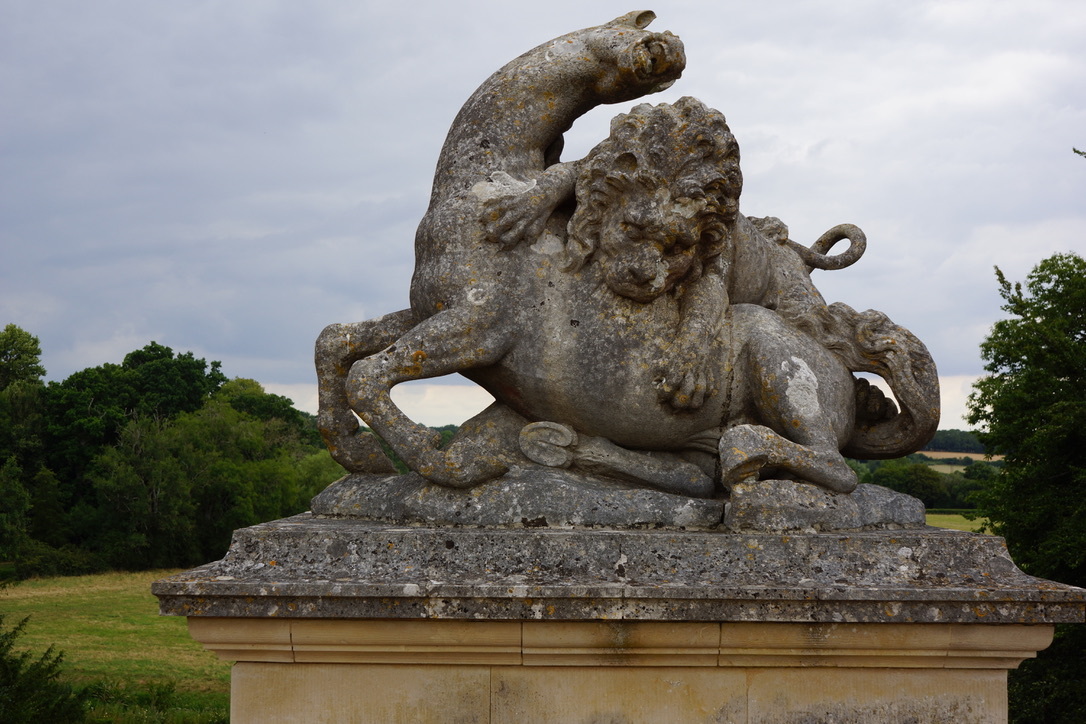
Unlike many historic properties in England, Rousham offers a more intimate and authentic visitor experience:
- Garden Access: The gardens are open to the public every day of the year from 10 am, with last admission at 4:30 pm.
- House Tours: The house itself is only open by appointment, allowing for a more personalized experience.
- Facilities: Rousham maintains its historic character by offering limited modern facilities. There is a self-serve ticket kiosk and bathroom facilities, but no gift shop or café. Visitors are encouraged to bring their own picnics to enjoy in the grounds.
- Accessibility: Due to its rural location, a car is necessary to reach the property. Some areas may have limited accessibility for those with mobility issues due to the historic nature of the site.
- Children and Pets: In keeping with the tranquil atmosphere of the gardens, children under 15 are not admitted unless by prior arrangement. Dogs are also not permitted, with the exception of assistance dogs.
- Cost: Tickets for the garden are £10 per person and can be purchased on arrival. Rousham House is only open by prior arrangement. The cost is £20 per person, with a minimum fee of £200.
Concluding Thoughts
From the Civil War-era musket holes in its oak door to the sweeping vistas of its Kentian landscape, Rousham tells the story of England's evolving tastes and turbulent history. The remarkable continuity of ownership by the Cottrell-Dormer family has preserved Rousham in a way few other historic properties can match. My favorite country houses in England are the survivors who have managed to stay in the same families that always owned them. It was not easy. It takes a kind of resilience that not all houses and their accompanying families were able to stand up to. Rousham is now firmly in my personal top ten favorite houses. I hope that it stays private and continues to preserve its air of exclusivity.
For those willing to venture off the beaten path, Rousham offers rewards that go beyond the typical heritage experience. Here, visitors can wander freely through Kent's imaginative landscapes, picnic in the shadow of classical follies, and experience the English countryside as it was envisioned by the great minds of the 18th century.
Whether you're a history student, an admirer of gardens, or simply someone in search of a peaceful day out, Rousham House and Gardens offers a uniquely authentic journey into the heart of English heritage. As the tour guide's rich narrative demonstrated to me, every corner of Rousham has a story to tell, waiting to be discovered by each visitor who steps through its gates.
I was sad when the coach took me away from this special place.
1 like
Post a reply